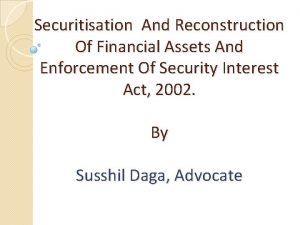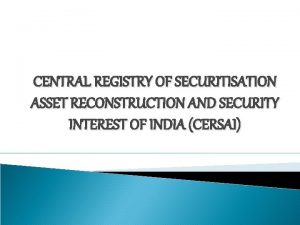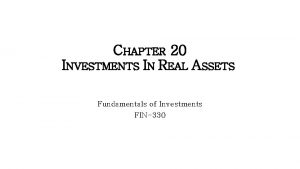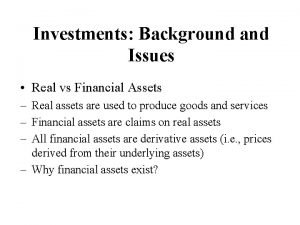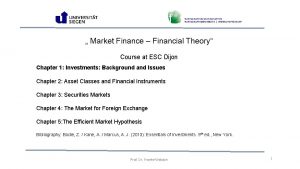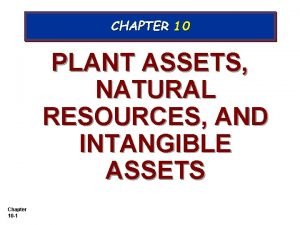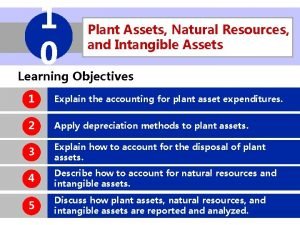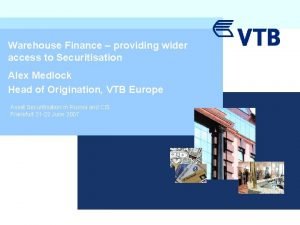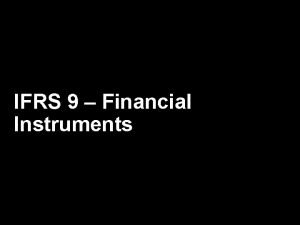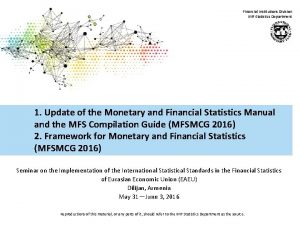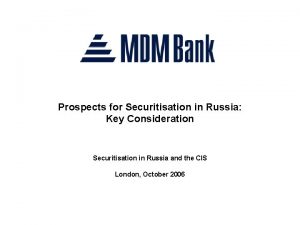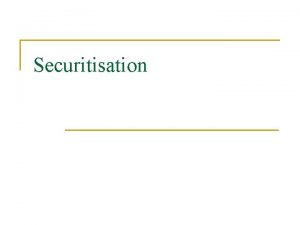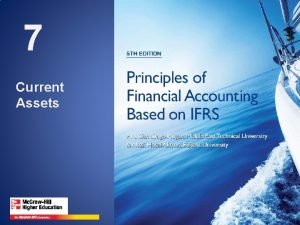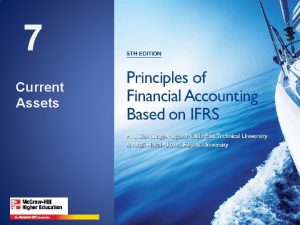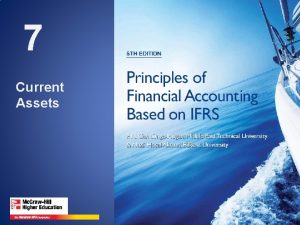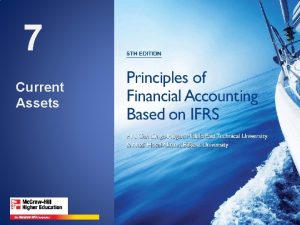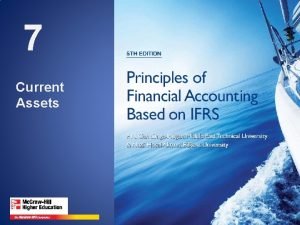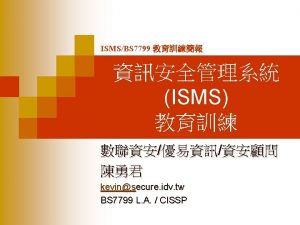SECURITISATION AND RECONSTRUCTION OF FINANCIAL ASSETS ORDINANCE 2002













- Slides: 13

SECURITISATION AND RECONSTRUCTION OF FINANCIAL ASSETS ORDINANCE, 2002

Objective : to create a new class of legal entities (ASRC) whose main business would be securitisation and asset reconstruction. This means taking over non performing assets of other institutions using their specialized skills to recover the loan / manage such assets.

Registration requirements (S 3) With RBI An existing company shall apply for registration with RBI within six months of the commencement of this ordinance.

Qualification for registration(S 3) 1. 2. he n 3. The company shall have minimum own funds of Rs. two crores or a capital adequacy of 15% vis-àvis total financial assets acquired or to be acquired. (It seems for companies having own funds of more than Rs. two crores, the capital adequacy norm would not apply. This will create an anomaly) The company shall not have made losses during any of the three preceding financial years. use various ways of not reporting losses) Adequate infrastructure for this particular type of business.

4. 5. 6. 7. 8. Shall be able to provide periodic returns and redeem the instruments on due dates which have been used for raising the funds. (It is not clear how an assessment for this ability would be made) No more than fifty percent of the directors shall be associated with the sponsor or its nominees or subsidiaries. A sponsor or holding company can have only one ASRC. Any substantial change in management, name or registered office to be approved by RBI. (Substantial change in management has not been defined and has been left to the discretion of RBI) RBI has power to set aggregate value of financial assets that may be acquired by ASRC. (S 12)

Acquisition of assets: ( S 5, 6 ) 1. ASRC may acquire the assets of bank or FI in the following manner; 1. By issue of debenture 2. By issue of bond 3. Any other security in the nature of debentures 4. Any other terms and conditions for transfer of such financial assets 2. On transfer of assets all the rights and obligations including legal proceedings of bank or FI would vest in ASRC. 3. Bank / FI may give notice to obligor / registering authority regarding such acquisition by ASRC

Means of financing the acquisition (S 7): 1. 2. 3. 4. 5. ASRC may raise funds from qualified institutional buyers (QIB). ASRC has to ensure funds are raised specific to a financial asset. Also realization from each financial asset shall be utilized towards redemption and returns assured for that financial asset only. ASRC may issue security receipts to QIB (not through public offer) after acquiring the financial asset. QIBs holding 75% of the security receipt may call a meeting of all QIBs and all the decisions taken shall be binding on the company. It is not clear whether the decision is binding on ASRC or the obligor

Activities of assets reconstruction companies (S 9): 1. 2. 3. 4. 5. 6. The proper management of the business of the borrower The sale or lease of a part or whole of the business of the borrower rescheduling of payment of debts payable by the borrower Enforcement of security interest as per this Ordinance Settlement of dues payable by the borrower Taking possession of secured assets in accordance with the provisions of this Ordinance.

Other functions of securitisation or reconstruction company (S 10): 1. 2. 3. Act as an agent for any bank or FI for the purpose of recovering their dues from the borrower. Act as a manager for the secured assets taken over by secured creditor Act as receiver appointed by court or tribunal ASRC can not carry on any other business.

Chapter III Enforcement of security interest (S 13): If the following conditions are fulfilled: a. A secured creditor b. Borrower’s account classified as NPA c. unt creditor detailing assets intended to be enforced r d. sixty days from the date of the notice e. fourth of thesecuredcreditorsinvaluetermshall agree to the exercise the right (S 13 (9))

Then, the secured creditor can: 1. Take possession of the secured assets of the borrower 2. Take over the management of the secured assets of the borrower 3. Appoint any person as manager to manage the secured assets whose possession is taken over 4. To force a third person who has acquired the secured assets to pay the money as is sufficient to pay the secured debt. The payment by such person would discharge him towards the borrower. However, in case the company is under liquidation, then the secured creditor has to ensure that workmen’s dues are paid. Enforcement of the measures given in section 13 are not a condition precedent to move against the guarantors or sell of pledged assets.

Manner of taking over the management of business of borrower (S 15): 1. The secured creditor (bank or FI) can take over the management of the business of the borrower by appointing directors or administrator of the business and by publishing the same in a newspaper. 2. On the publication of the notice all the existing directors and administrators of the borrower shall be deemed to have vacated their office. 3. On the publication of the notice any contract of management between the borrower and director or manager of the borrower shall be deemed to be terminated. 4. All the property and effects of the business of the borrower shall be deemed to be in the custody of new director or administrator from the date of publication of the notice and shall take such steps to take into their custody or control the said property and effects.

5. The new directors or administrator will derive their power from the memorandum or articles of association of the company or from other source whatsoever. 6. Shareholder of such company can not nominate any person as director nor give effect to any resolution passed without the approval of the secured creditor. 7. No proceeding for winding up or for appointment of a receiver can lie except with the consent of the secured creditor. (of borrower) 8. On realization of its debt in full, the secured creditor shall restore the management of the business of the borrower to him. 9. Ousted directors or other persons will not be entitled for any compensation the loss of office or premature termination of office. (S 16)
 Securitisation and reconstruction of financial assets
Securitisation and reconstruction of financial assets Cersai satisfaction form
Cersai satisfaction form Real assets and financial assets ppt
Real assets and financial assets ppt Real vs financial assets
Real vs financial assets Real assets vs financial assets
Real assets vs financial assets Real assets versus financial assets
Real assets versus financial assets Natural asset companies
Natural asset companies Plant assets natural resources and intangible assets
Plant assets natural resources and intangible assets Plant assets, natural resources, and intangible assets
Plant assets, natural resources, and intangible assets Warehouse finance
Warehouse finance Bonds and other financial assets
Bonds and other financial assets Financial assets examples
Financial assets examples Financial assets ifrs
Financial assets ifrs Financial institutions division
Financial institutions division
